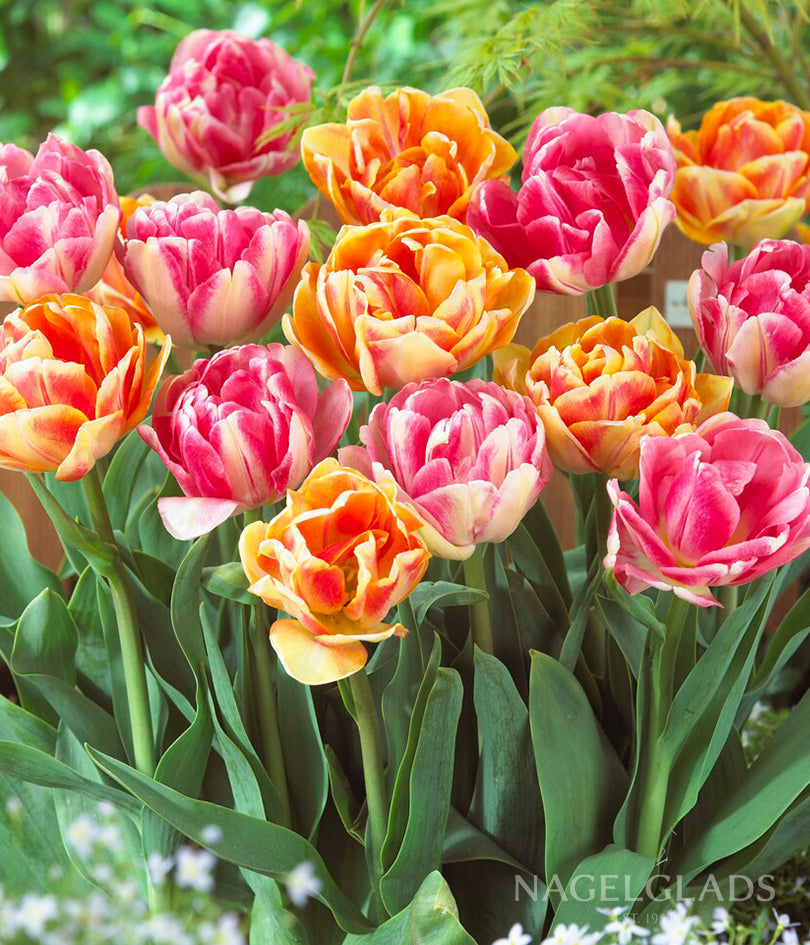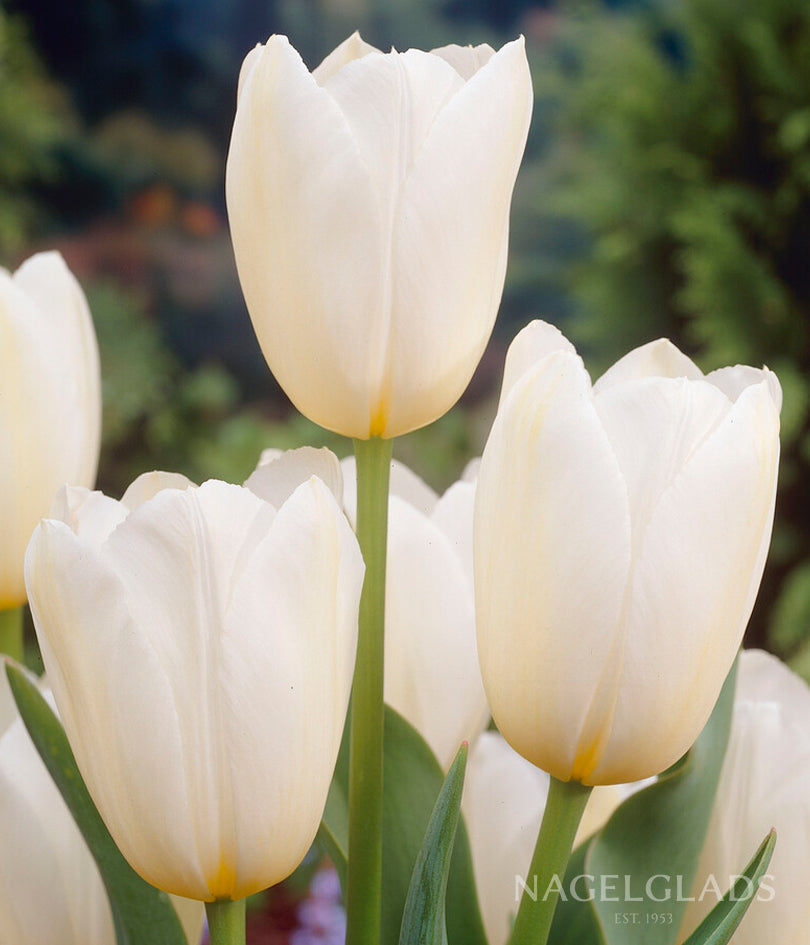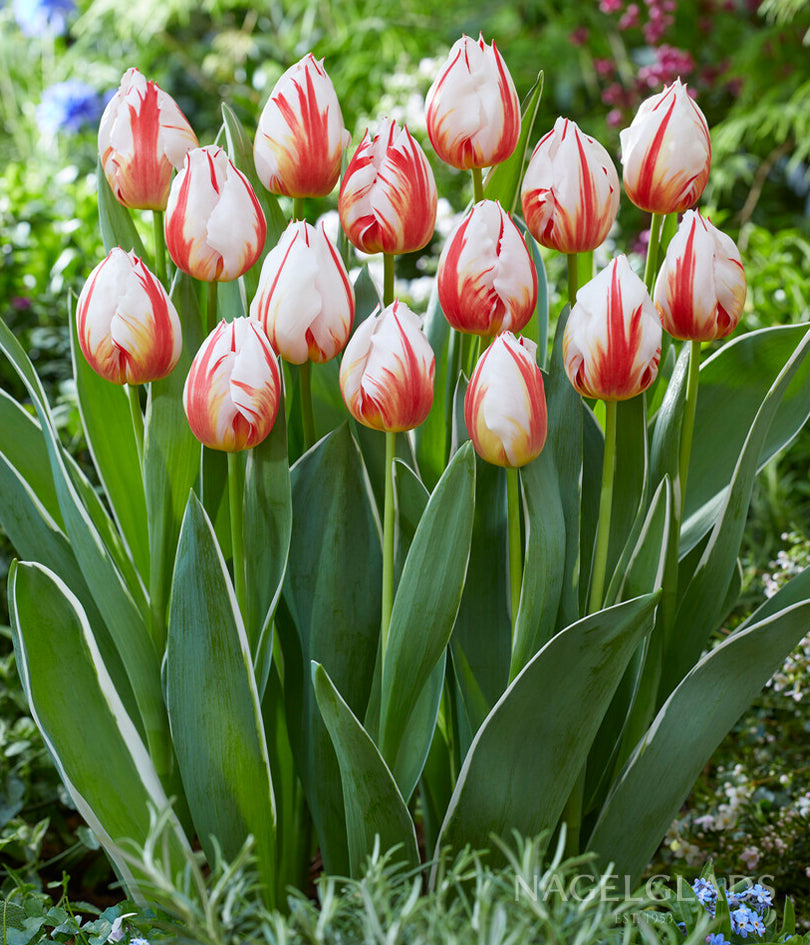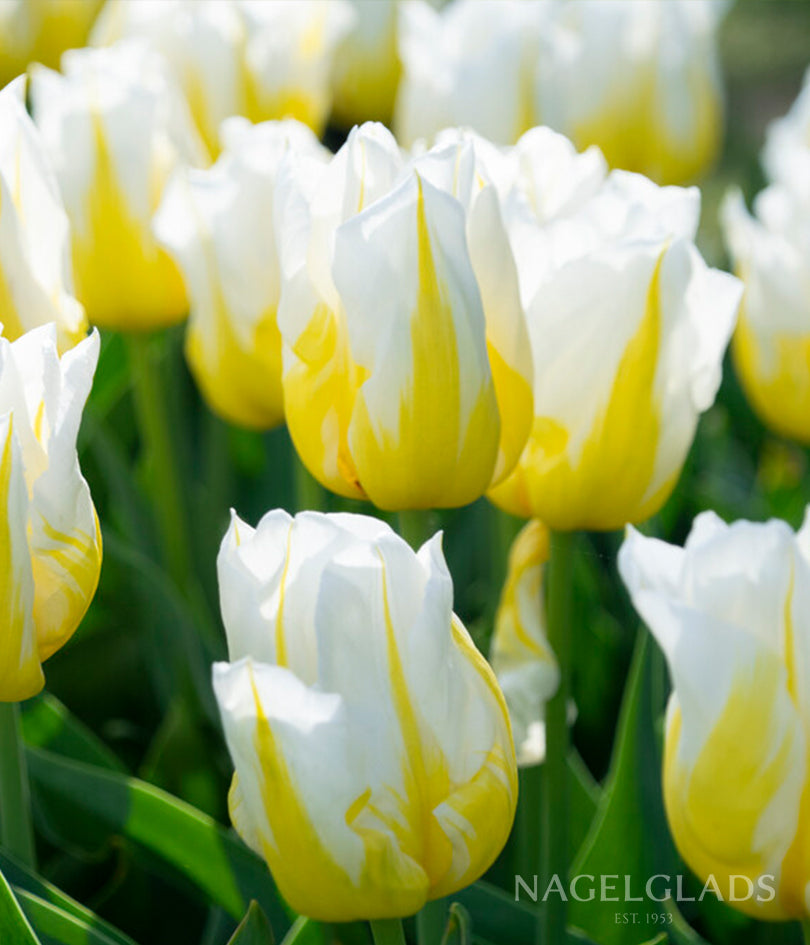Check out our tips on how to optimize garden space and conditions to grow flowers in bulk for sale. This guide discusses best practices to grow your new cut flower business. Pun intended!
Growing Tulips and Daffodils for the market is a rewarding endeavor that can bring beauty and profitability to your garden. With the right strategies, you can optimize your garden space and conditions to produce these stunning flowers in bulk. Let’s explore how you can make the most of your garden and turn it into a flourishing business, featuring some of the most popular and visually striking tulip and daffodil varieties.
Efficient Garden Layout

The layout of your garden is crucial for maximizing space and ensuring your flowers have the best conditions to thrive. Start by planning your garden beds in rows, which makes it easier to manage and harvest your flowers. Tulips and daffodils, such as Double Tulips and Daffodil Mixes, benefit from being planted in well-drained soil with good sun exposure. Consider using raised beds or mounded rows to improve drainage and prevent waterlogging, which is especially important for these bulb flowers.
Top 5 Tips for Garden Layout:
- Row Planting: Arrange your garden in rows for easy access and management.
- Raised Beds: Use raised beds or mounded rows to improve drainage.
- Companion Planting: Plant flowers with complementary growth habits together to maximize space.
- Pathways: Create clear pathways between rows for efficient maintenance and harvesting.
- Sunlight Exposure: Ensure your garden is positioned to receive adequate sunlight throughout the day.
Soil Preparation and Fertilization
Preparing your soil properly is essential for growing healthy tulips and daffodils. Start by testing your soil’s pH and nutrient levels. Tulips, including Fringed Tulips and Triumph Tulips, thrive in soil with a pH between 6.0 and 7.0. Amend your soil with organic matter like compost to improve its structure and fertility. A balanced fertilizer, applied at planting and periodically during the growing season, will provide the nutrients your flowers need to produce vibrant, market-ready blooms.
Watering and Irrigation
Consistent watering is key to growing strong, healthy flowers. While tulips and daffodils are relatively drought-tolerant, they still need regular moisture, especially during their growth period. Install an efficient irrigation system, such as drip irrigation, to provide consistent water without over-saturating the soil. This method also helps prevent water from directly hitting the leaves and flowers, reducing the risk of disease.
Choosing the Right Varieties

Selecting the right tulip and daffodil varieties can make a big difference in the success of your flower business. Popular varieties like Parrot Tulips and Bicolored Daffodils are known for their unique and eye-catching appearances, making them highly desirable in the market. Color Combos Flower Mixes, attract customers looking for vibrant and diverse floral arrangements, and Yellow Daffodils are always a customer favorite. Enjoy picking out your showstoppers!
Top 5 Tulip and Daffodil Varieties for Market:
- Double Tulips: Known for their lush, full blooms.
- Fringed Tulips: Unique petal edges add texture and interest.
- Triumph Tulips: Classic, sturdy, and vibrant blooms.
- Bicolored Daffodils: Striking two-tone flowers that catch the eye.
- Yellow Daffodils: Bright, cheerful, and universally loved.
Pest and Disease Management
Keeping your tulips and daffodils healthy involves proactive pest and disease management. Regularly inspect your plants for signs of pests such as aphids and slugs, and use organic or chemical controls as needed. Disease prevention is also crucial; ensure proper spacing and airflow between plants to reduce the risk of fungal infections. Removing any diseased plants promptly can prevent the spread to healthy ones.
Harvesting and Post-Harvest Care
Knowing when and how to harvest your flowers ensures they reach the market in peak condition. Harvest tulips when the buds are just beginning to show color and daffodils when the buds are still tight but starting to open. Early morning is the best time to harvest, as the flowers are most hydrated. After harvesting, place the flowers in a cool, dark place and use a floral preservative in the water to extend their vase life.
Top 5 Tips for Post-Harvest Care:
- Cool Storage: Keep flowers in a cool, dark place immediately after harvesting.
- Hydration: Use clean water with floral preservatives to maintain freshness.
- Trim Stems: Cut stems at an angle to improve water uptake.
- Humidity Control: Maintain high humidity to prevent dehydration.
- Regular Check: Inspect flowers regularly and remove any wilted or damaged blooms.
Displaying Your Flowers at a Farmer's Market
Displaying your flowers attractively at a farmer's market can boost sales and attract customers. Use clean, sturdy buckets or vases to showcase your blooms. Arrange flowers like Color Combos Flower Mixes in eye-catching bouquets. Make your display well-organized with clear signage. Engage with customers and offer pre-made bouquets for quick purchases. Have fun sharing your beautiful blooms!
By following these tips, you're well on your way to maximizing your garden's potential and growing tulips and daffodils that will captivate your customers. With careful planning, efficient practices, and a passion for beautiful blooms, your cut flower business will flourish. Here's to a successful and blooming future! 🌷🌼


























